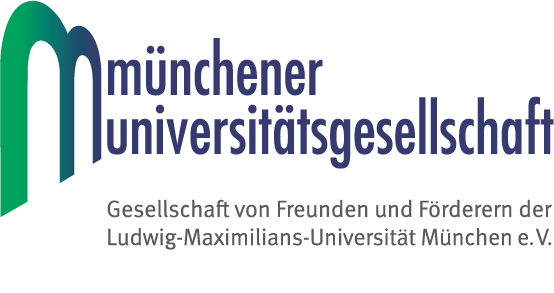17th Day of Probability
Erlangen-München
06 July 2018
This year's Day
of Probability Erlangen-München is dedicated to the memory of Hans-Otto
Georgii (1944-2017). Professor Georgii obtained a PhD in Mathematics in
Erlangen in 1972, and was a professor of Mathematics at LMU since 1981.
The thematic focus of this day is
Stochastic Geometry and its role in Statistical Mechanics
| Schedule and speakers |
|
| 10:00-11:00 | Ellen
Baake (Universität Bielefeld) Lines of descent under selection |
| 11:15-12:15 | Thomas Richthammer
(Universität Paderborn) How rigid can 2D crystals be? |
| Lunch break | |
| 14:15-15:15 | David Dereudre
(Université Lille 1, FR) Canonical DLR equations and rigidity for the Sine-beta process |
| 15:45-16:45 | Olle Häggström
(Chalmers University of Technology, Göteborg, SE) Working with Hans-Otto Georgii on random-cluster representations and related topics |
| 16:45-17:45 | Stefan
Adams (Warwick University, UK) Phase Transitions in Delaunay Potts and Widom-Rowlinson Models |
| 17:45 | Reception |
The scientific program is in lecture hall A027 (ground floor), the reception is in room B 349.
Please register by email to sekrmerk@math.lmu.de.
Abstracts:
Ellen Baake: Lines of descent under selection
Building on joint work with Hans-Otto Georgii on ancestral lines in multitype branching processes [1,2], we review recent progress on ancestral processes related to mutation-selection models in the deterministic limit [3]. We mainly rely on two concepts, namely, the killed ancestral selection graph and the pruned lookdown ancestral selection graph. The killed ancestral selection graph gives a representation of the type of a random individual from a stationary population, based upon the individual’s potential ancestry back until the mutations that define the individual’s type. The pruned lookdown ancestral selection graph allows to trace the ancestry of individuals from a stationary distribution back into the distant past, thus leading to the stationary distribution of ancestral types. We illustrate the
results by applying them to a prototype model for the error threshold phenomenon.
[1] H.-O. Georgii, E. Baake, Supercritical multitype branching processes: the ancestral types of typical individuals. Adv. Appl. Probab. 35, 1090–1110 (2003)
[2] E. Baake, H.-O. Georgii, Mutation, selection, and ancestry in branching models: a variational approach. J. Math. Biol. 54, 257–303 (2007)
[3] E. Baake, A. Wakolbinger, Lines of descent under selection, J. Stat. Phys. 2018 (online first)
Thomas Richthammer: How rigid can 2D crystals be?
Many 2D Gibbsian point processes are believed to show some sort of crystalline phase: If the temperature is sufficiently low (or the density sufficiently high) the points arrange themselves into a regular pattern, which is characterized by long-range correlations. So far there is no rigorous proof of this phenomenon. We show that the expected regular pattern can not be too rigid: In a system of size n, positions of points near the center of the system fluctuate by at least a constant times (log n)^(1/2). Our result holds for fairly general interaction potentials (including all interesting examples of interacting particle systems we know of) and arbitrary values of temperature and particle density. (Joint work with Michael Fiedler.)
David Dereudre: Canonical DLR equations and rigidity for the Sine-beta process
The Sine-beta process is the limit in law of the point process associated to one-dimensional log-gases, as well as the limit of eigenvalue statistics at microscopic scale for certain random matrix models: the Gaussian and Circular beta-ensembles. We give a description of the Sine-beta process using the Dobrushin-Landford-Ruelle (DLR) formalism by proving that Sine-beta satisfies the canonical DLR equations: the restriction of the process to a segment, conditionally to the exterior configuration and to the number of interior points, can be written as a Gibbs measure. Then, we use the DLR equations to establish that Sine-beta is a rigid point process i.e. that the exterior configuration almost surely determines the number of interior points in a given segment.
Olle Häggström: Working with Hans-Otto Georgii on random-cluster representations and related topics
This talk concerns two interrelated themes. First, the usefulness of random-cluster representations and related stochastic-geometric tools in the study of phase transitions in Gibbsian statistical mechanics. Second, the crucial influence that Hans-Otto Georgii had on me when I was a young postdoc in the 1990s.
Stefan Adams: Phase Transitions in Delaunay Potts and Widom-Rowlinson Models
We establish phase transitions for continuum Delaunay multi-type particle systems (continuum Potts or Widom-Rowlinson models) with a repulsive interaction between particles of different types. Our interaction potential depends solely on the length of the Delaunay edges. We show that a phase transition occurs for sufficiently large activities and for sufficiently large potential parameter proving an old conjecture of Lebowitz and Lieb extended to the Delaunay structure.
Our approach involves a Delaunay random-cluster representation analogous to the Fortuin-Kasteleyn representation of the Potts model (we extend the method develop by Georgii and Haggstrom in 1996 to the Delaunay setting). The phase transition manifests itself in the mixed site-bond percolation of the corresponding random-cluster model. Our proofs rely mainly on geometric properties of Delaunay tessellations in $\R^2 $ and on recent studies (Dereudre, Drouilhet, Georgii) of Gibbs measures for geometry-dependent interactions. The main tool is a uniform bound on the number of connected components in the Delaunay graph which provides a novel approach to Delaunay Widom Rowlinson models based on purely geometric arguments. The interaction potential ensures that shorter Delaunay edges are more likely to be open and thus offsets the possibility of having an unbounded number of connected components. (Joint work with E. Eyers)
Organizers: Noam Berger (TUM), Nina Gantert (TUM), Andreas Greven (Erlangen), Markus Heydenreich (LMU), Sabine Jansen (LMU), Gerhard Keller (Erlangen), Franz Merkl (LMU), Silke Rolles (TUM)
The practical arrangement is in hands of Stephanie Hodek (LMU).
The organizers gratefully acknowledge support from Münchner Universitätsgesellschaft.





